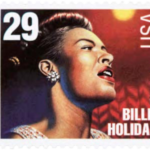Vintage microphones
Echoes of the past, now and in the future...

Welcome to Vintagemicrophones.be, where the echoes of the past come to life through the timeless beauty of vintage microphones.
Step into a world of sonic nostalgia and discover the allure of classic audio craftsmanship.
From iconic models that shaped the history of sound recording to rare gems with stories untold, our collection celebrates the artistry and vintage charm of these exceptional microphones.
Explore the rich tapestry of audio history with us and embark on a journey that transcends time.
All the microphones you will see in the picture gallery are part of my collection.
If you are interested in one of the pictures you can download these in the ‘Pictures download store‘.
and many more of this microphone images…
Here are all the full size pictures from the most vintage microphones out of the photo collection.
It took some time to create, and that’s why we ask a little contribution to download.
Our collection is far from complete as we could only dream to have all the vintage microphones in the world.
But i try to give you a tour in the wondering world of old microphones or like most people say : vintage microphones…. Enjoy !
This website is created for educational reason and because it is necessary that we keep our past alive and kicking.
The website will be regularly updated with new information. Keep following us !

Looking for an old microphone or for any other item related to the vintage microphone ?
Want to see your request here ?
Just let me know by emailing me or use my Facebook link for posting.

— Looking for tube audio amp using tubes 5y3,6sk7,6sq7 and6v6.
Was from my dad’s correspondence coarse probably in the 1950’s
email : mctech11@yahoo.com
october 9th 2025
— Looking for call letter flag, “KMA”
Our station is 100 years old and seeing if one is out there. Thx
 Many artists today are embracing vintage microphones for their unique sound and aesthetic. Some notable names include:
Many artists today are embracing vintage microphones for their unique sound and aesthetic. Some notable names include:
- Adele – Known for her powerful vocals, she often uses vintage mics to capture warmth in her recordings.
- Bruno Mars – He frequently incorporates vintage gear into his performances and recordings to achieve a classic sound.
- Lana Del Rey – Her retro style is complemented by the use of vintage microphones, adding to her nostalgic vibe.
- Jack White – He is known for his love of vintage equipment, including microphones, to create a raw, authentic sound.
These artists appreciate the character that vintage microphones can bring to their music, making them a popular choice in various genres.
Old microphones and old radio's...
What do they have in common ?

Old radios and old microphones actually have a lot in common—both in how they work and how they were built. Here’s a quick breakdown:
1. Analog Tech Vibes
Both old radios and old microphones were built around analog technology. That means they relied on continuous electrical signals, unlike modern digital devices that use binary data (1s and 0s). This gave them that warm, vintage sound people love.
2. Vacuum Tubes
Many old radios and microphones (especially high-end ones) used vacuum tubes for amplification. These tubes gave off a distinctive warm tone and slight distortion that’s now considered nostalgic or even desirable in music production.
3. Big, Durable Design
They were built to last, often made with metal, wood, and glass instead of today’s lightweight plastics. This gave them a chunky, retro aesthetic that’s now iconic.
4. Electromagnetic Principles
Both used basic electromagnetic principles:
Old microphones converted sound waves into electrical signals using a diaphragm and a coil or capacitor.
Old radios received those electrical signals (like from a mic during a broadcast) and converted them back into sound.
5. Mono Sound
Stereo didn’t become standard until later, so both typically used mono sound—a single audio channel. That gives old recordings and broadcasts a very particular character.
6. Connection to Early Broadcasting
They were both key players in the golden age of radio. Microphones picked up voices and music, which were then transmitted and heard on radios everywhere. Think of old-timey radio dramas and jazz performances!
How they worked together ?
In a 1940s radio station, a ribbon or carbon microphone would pick up a performer’s voice.
That signal would be amplified and transmitted via radio waves.
The radio at home would receive those waves, demodulate them, amplify the signal, and play it through its speaker.
So, both mic and radio were part of a broadcast loop—one turning voice into signal, the other turning signal back into voice.
Why are we using vintage micophones ?
People use vintage microphones for several reasons, and the choice often depends on the specific needs and preferences of the user. Here are some common reasons why individuals and professionals may choose to use vintage microphones:
Character and Sound Quality:
- Vintage microphones are often sought after for their unique sonic characteristics. Some users appreciate the warm, rich, and sometimes idiosyncratic sound produced by certain vintage models. These microphones can impart a particular color or character to recordings that is distinct from modern microphones.
Aesthetic Appeal:
- Vintage microphones often have a classic and visually appealing design. Some users choose them not only for their sound but also for the nostalgic or aesthetic value they bring to a studio setup or live performance.
Historical Significance:
- Certain vintage microphones have historical significance, having been used in iconic recordings or by famous artists. Using these microphones can be a way to connect with the history of audio recording and pay homage to the pioneers of the industry.
Versatility:
- Some vintage microphones are known for their versatility and ability to capture a wide range of sound sources effectively. Musicians and recording engineers may choose vintage models that are well-regarded for specific applications, such as vocals, instruments, or ambient recording.
Limited Availability:
- Many vintage microphones are no longer in production, and their availability is limited. As a result, collectors, audio enthusiasts, and professionals may seek out these microphones as prized possessions or investments.
DIY and Modification:
- Some audio enthusiasts enjoy working with vintage microphones as DIY projects. They may modify or upgrade components to tailor the microphone to their preferences, creating a unique and customized piece of audio equipment.
Recording Techniques:
- Vintage microphones may be preferred for specific recording techniques, such as capturing the sound of a particular era or replicating the recording methods used in classic albums. Engineers and producers may use vintage microphones as part of a creative process to achieve a desired sonic signature.
It’s important to note that while vintage microphones offer unique qualities, modern microphone technology has also advanced significantly, and there are many excellent contemporary microphones available. The choice between vintage and modern microphones often comes down to personal taste, the specific requirements of a recording project, and the desired sonic characteristics for a given application.
Melodium microphones (France). See how they used them and the experience in a studio those days.
Further below this site you discover how they build this new model (Melodium 42Bn)
Vintage Microphones, but what does it mean ?
“Vintage microphones” refers to microphones that are considered old, classic, or from a previous era, typically associated with a specific historical period. The term “vintage” implies that these microphones are not recent or contemporary but have a certain age and often possess unique characteristics that distinguish them from more modern counterparts.
Vintage microphones can come from various decades, with certain periods being particularly notable for the development of iconic microphone models. The appeal of vintage microphones lies in their historical significance, craftsmanship, and the distinct sonic qualities they bring to audio recordings.
Collectors, audio enthusiasts, and recording professionals may seek out vintage microphones for various reasons, including their unique aesthetic charm, the desire to capture a specific retro sound, or the appreciation of the engineering and design innovations of a bygone era.
It’s important to note that while vintage microphones can offer a unique and desirable audio character, they may also come with challenges. These challenges can include issues related to maintenance, availability of replacement parts, and the fact that technology has evolved, potentially offering improved performance in certain aspects with modern microphone designs.
Was Thomas Edison the real inventor ?
How does a microphone work
Patterns, brands, pictures and much more...
Where to buy a vintage microphone ?

If you’re looking to buy a vintage microphone, there are several places where you can explore and find a variety of options. Here are some suggestions:
Vintage Audio Equipment Dealers: Specialized dealers that focus on vintage audio equipment, including microphones, often have a curated selection of products. These dealers may have expertise in the history and condition of the items they sell.
Online Auctions: Websites like eBay often have a variety of vintage microphones available for auction or direct purchase. Ensure that the seller has a good reputation, and carefully review product descriptions and images before making a purchase.
Dedicated Online Marketplaces: There are online platforms specifically designed for buying and selling audio equipment. Examples include Reverb and Vintage King. These platforms may have a wide range of vintage microphones with detailed descriptions and seller ratings.
Audio Gear Forums: Participating in online forums dedicated to audio equipment, recording, or vintage gear can be a great way to connect with sellers or fellow enthusiasts. Some forums may have dedicated sections for buying and selling.
Antique Shops and Flea Markets: Local antique shops, flea markets, or vintage stores might have vintage microphones, although the selection can vary. It’s worth exploring these places, especially if you enjoy the experience of browsing in person.
Vintage Audio Shows and Events: Attendees and vendors at vintage audio shows and events often bring a variety of vintage gear, including microphones, for sale. These events can be an excellent opportunity to see and test the equipment in person.
Auction Houses: Occasionally, vintage microphones are sold through auction houses, either in person or online. Keep an eye on auction catalogs and events that specialize in audio equipment.
Before making a purchase, it’s important to research the specific microphone you’re interested in, verify its condition, and ensure that the seller is reputable. If possible, ask for detailed photos and information about the microphone’s history and any restoration work that may have been done. Additionally, be aware of return policies and payment methods when buying vintage gear.
And the winner is.....sure it's Shure !

Not necessary to mention the name of this microphone ?
Not really, but just in case you are totally not familiar with vintage microphones, this is a Shure Unidyne microphone.
An instant success, the original Unidyne set a new standard of high quality audio combined with discrimination against unwanted sounds. True to Bauer’s design, the directional response was more predictable and better behaved than its predecessors, so it offered a new ability to control feedback and reduce ambient noise pickup. In addition, its size was small compared to competitive offerings, making it popular with singers, entertainers, and public speakers.
During the years between 1939 and 1946, the Unidyne changed very little. Variations of the original design included the 1940 introduction of a separate broadcast version (Model 555), which had an improved vibrational isolation mount. A radio station call letter plate that fit on the top of the microphone was sold separately as an accessory.
By 1947, the broadcast version had become Model 556, and the three 55 models with different impedances were replaced with one single model, equipped with a multi-impedance selector switch located under the case at the rear. Changes were in the offing at the end of the decade; however, as Shure prepared to deliver yet another breakthrough.
In the 1950s, Shure created a print ad for trade publications that illustrated the industry dominance that the Unidyne held around the globe. It was titled “Photographed With More Celebrities the World Over…Than Any Other Microphone.” The subhead read “The Microphone That Needs No Name.” The ad featured a large photo of the Unidyne, but neither the name nor model of the microphone appeared at all. The objective of this ad was to demonstrate how popular the Unidyne had become. It was a microphone that needed no name or introduction. It was recognized everywhere.
Some examples...
But also used on stamps etc...
And it never stops...tattoos
The very popular Melodium 42B is recreated ! How it's made...
The Melodium 42Bn is a new ribbon microphone directly inspired by its predecessor, the Melodium 42B.
The original microphone, made from the late ’40s until the late ’60s, had an advantage thanks to one part of its design: its ribbon was one of the largest ever made. Surrounded by 4 monster AlNiCo magnets, it delivered a smooth and warm sound through a specific step-up transformer, which was designed to change the impedance but also act as a passive filter The Melodium 42B compares favorably to its American and German peers of the same period.

The new Melodium 42Bn (the “n” is for “new”) is based on the same magnet technology, an improved motor, an overall improved mechanical construction, a custom-wound transformer allowing for a higher output impedance, and a classic XLR plug, making the microphone easy to use in a modern environment. We made the choice to remove the passive filter system, which doesn’t really belong in the studio environment anymore.
As a result, the Melodium 42Bn is the true successor of the original 42B, thanks to the use of a very large ribbon and AlNiCo 600 magnets, which allow it to keep its characteristic sound while avoiding the overboosted sounds of some microphones using neodymium technology. Modern improvements allow it to find its place in any contemporary studio configuration.
Looking for microphones ? Want to sell your microphone ? Do you have questions related to vintage microphones ?
Follow us on facebook.



















